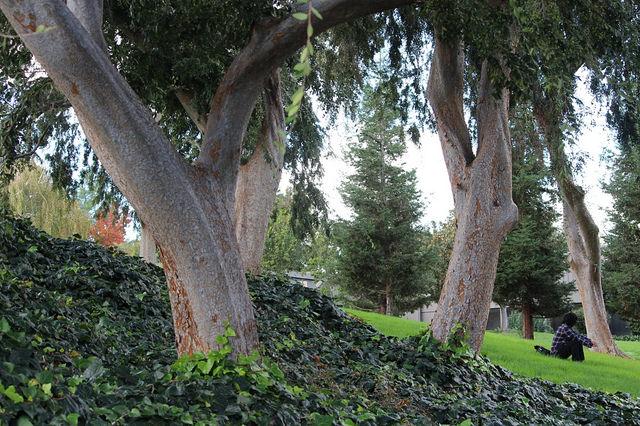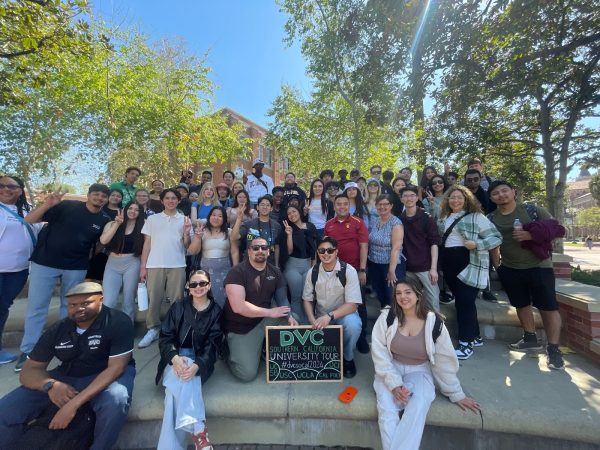The secret life of DVC trees
A few of the 46 species of trees on the DVC campus.
November 5, 2016
Next time you’re heading to class, look around. Chances are you’re walking near the gentle canopy of one of the 600 trees on campus.
Each and every tree in high-traffic areas of Diablo Valley College has been inventoried and marked by species, location, health, and structural integrity. Each one plays an important role in an enormous natural ecology that extends well into the surrounding community.
“Trees are hubs for a myriad of lifeforms,” said Torrey Young, an arborist hired by DVC to conduct the inventory.
“The trunks of trees and their branches provide habitat for birds and mammals while buffering winds and rainfall. Their leaves and fruits feed other creatures while providing building supplies for the homes of others. Through endless symbiotic relationships they provide a framework for support and nutrition for other plant life.”
Even the manner in which trees decay is part of an intricate interconnection of life, Young says. “Their falling leaves and twigs protect the soil surface and reduce erosion while sheltering a myriad of organisms. They interact in the soil with fungi and insects and they contribute to soil development in the decay of their shed parts.”
The campus tree survey was conducted when safety concerns became a critical issue, John Nahlen, DVC vice president of business and administrative services says.
In 2014, “we had a couple of pretty heavy rains and lost two or three trees that fell over. We lost one really nice, large tree over by the library, one by the old counseling center. Then we lost at least one, maybe two, by the music building.”
Young and his company, Dryad, which is the name of a mythical forest nymph, inventoried 260 individual trees in DVC’s high-traffic areas. Sadly, a number of them needed to be removed because their structural integrity was compromised and they posed a safety risk. Still, 600-700 healthy trees remain on DVC’s campus, Young says.
Nahlen says the last few years of drought have not impacted DVC vegetation because “our landscaping is on recycled water.” But issues with the irrigation system are a challenge. “A number of our irrigation control boxes have copper wire in them. We’ve had vandals that break in and steal the wire. Some of our irrigation systems are old, hard to maintain. We’re trying to work some projects in to replace them.”
So far, the trees have withstood the spotty irrigation.
Young says, “In the absence of human management, many species thrive for hundreds and even thousands of years. Trees are extremely responsive to conditions and develop in a manner most conducive to thriving in a given environment.”
Each tree on campus can potentially take in 48 pounds of carbon dioxide per year, according to the Arbor Environmental Alliance, and an acre of forest can sequester as much as 100 metric tons of carbon dioxide over time.
And of course, green vegetation on land and in the oceans makes 95 percent of all the oxygen on Earth. Breathe that in.
Yet the impact of trees on humans is more than just physical, Young says. “Trees inspire a kaleidoscope of emotions, sounds, movements and aesthetic enchantment beyond measure, inspiring artwork, poetry and stories.”
Look around next time you’re heading to class. Gaze up and just notice the 600 magnificent trees quietly sustaining life and providing beauty around you as you go on your way.

















































































